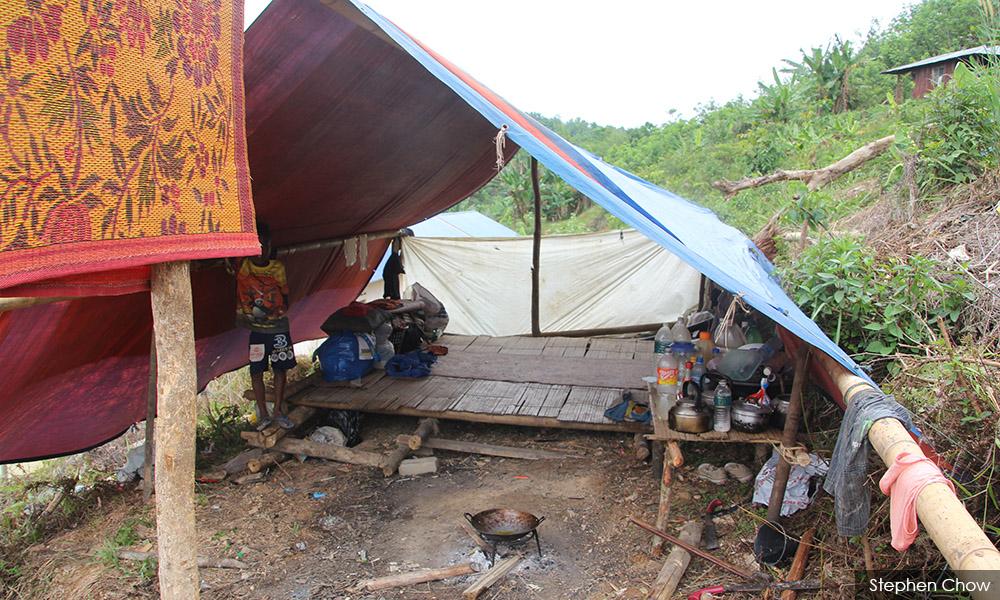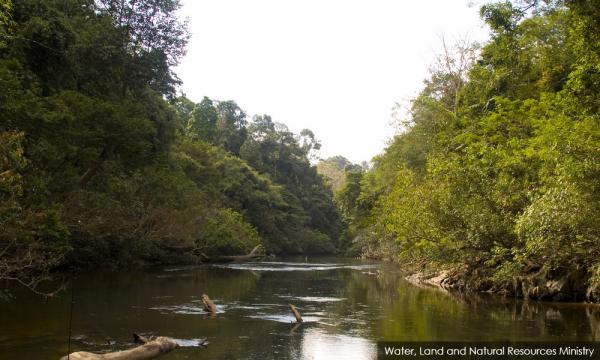The mystery over the cause of death of several Orang Asli in Kampung Kuala Koh in Gua Musang, Kelantan, remains unresolved.
However, a recent study by a local university has indicated the possible presence of toxic substances in samples taken from the rivers used by the locals as their water source.
Universiti Malaysia Kelantan (UMK) is conducting an ongoing study on samples of water, sediment and suspended particles taken from the main river Sungai Lebir and some of its tributaries flowing near the settlement.
Its preliminary findings have given an "indication of the possibility of certain harmful toxic substances being present in the sediment deposits", according to UMK senior lecturer in mineral resource technology, mining and environment Abdul Hafidz Yusoff.
"Samples of the sediment deposits were taken from the rivers near Kampung Kuala Koh, and we believe the source of the toxic substances is the nearby illegal manganese mine (which was sealed by the Mineral and Geoscience Department on June 11)," he told Bernama recently.
He, however, declined to give more details on the identity of the toxic substances, saying that confirmation can only be made after the findings have been subject to several stages of verification, which would take a few months to complete.
Health Minister Dzulkefly Ahmad said in a recent statement that the results of post-mortems conducted on the skeletal remains of 12 members of the Batek tribe from Kampung Kuala Koh - who had died "mysteriously" between May 2 and June 7 - could not confirm the cause of their deaths.
He said the ministry was still awaiting the results of the toxicology and heavy metal tests and that the number of deaths due to measles remained at three.
Spectre of pollution
Hafidz said although media reports had ruled out the presence of harmful chemicals in the area's river water, the level of pollution in a river cannot be measured merely by examining the pollutants in its water.
On June 12, the Chemistry Department had said that the overall water quality in Sungai Lebir complied with the National Drinking Water Quality Standard for Raw Water.
Hafidz said toxic minerals like cadmium, mercury and arsenic were usually present in low concentrations in water even if the river was polluted.
Mercury emissions from industries, for instance, may only be found in small quantities in the water, but substantial amounts may be found in sediment deposits, he pointed out.
"Further studies are now being carried out on the samples of sediment and suspended particles that we've taken from the waters of several rivers in Kampung Kuala Koh to detect the presence of mercury, which is a hazardous metal," he added.

On why only a small quantity of mercury can be found in the water, Hafidz said the metal usually clings to suspended soil when it is swept down from a mining area to the riverbed.
The mercury from the sediment eventually leaches into the river water, he said, adding that the Orang Asli can be exposed to mercury when they drink the water from the river or eat fish that have been contaminated with the metal through bioaccumulation.
Detailed study
Hafidz said using the sediment dating technique, their study on the sediment samples would provide an indication of the pattern of contamination that has occurred within the past 10 to 15 years.
The university researchers are also carrying out studies on the fish from the rivers in Kampung Kuala Koh to detect the presence of toxic metals in their bodies.
He said a survey also found that the Bateq people in Kampung Kuala Koh did not have any source of clean water and that they drank water directly from the river.
"The authorities did provide them with a tank to store filtered water, but unfortunately, it is damaged," he said, adding that the lives of the people there would be in peril if the river water is indeed found to be contaminated.
On the connection between the possible mercury contamination and the manganese mine that used to operate near Kampung Kuala Koh, Hafidz said it was normal for mine operators to use mercury to extract minerals.
Arsenic is another hazardous metal that is found in mining areas. Mercury poisoning can cause brain and nerve defects, kidney damage and cancer, while arsenic toxicity can lead to lung inflammation, skin cancer and heart disease.
Hafidz said while there were various ways to treat contaminated water, the most important thing to do was to determine the pollution source.
After the source has been identified and dealt with appropriately, water quality tests must be carried out via the Continuous Environmental Management System every hour using real-time data.
Hafidz said he and his colleagues from UMK's Faculty of Bioengineering and Technology and Faculty of Earth Science were developing a smartphone application to enable the authorities to monitor data for water quality parameters.
"Once we successfully develop this application (powered by the Internet of Things technology), pollution problems can be overcome quickly because information (readings) can be obtained fast," he added.
- Bernama


